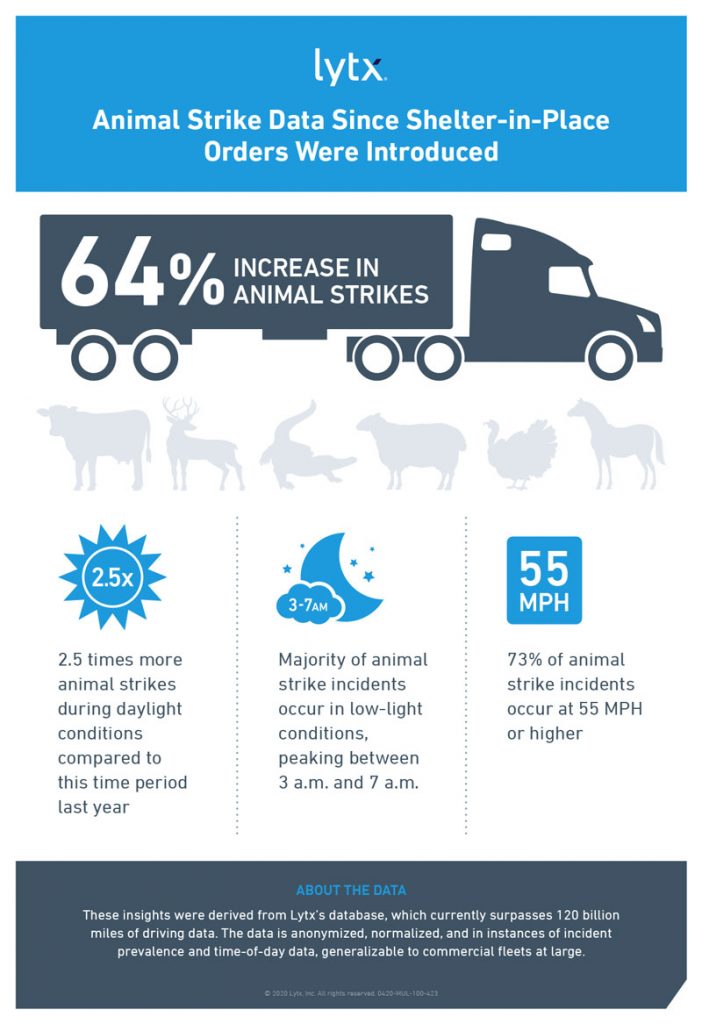Lytx has shared new insights about changes in driving risk tied to the COVID-19 pandemic and associated guidelines to help control the spread of the virus.
Lytx data shows a 64% increase in animal strikes since shelter-in-place guidelines were widely introduced across the country. This aligns with other reports, including CNBC coverage showing wildlife is roaming into more developed areas, Lytx says.
The majority of animal strike incidents occur in the early morning hours during low light conditions, peaking between 3 a.m. and 7 a.m., and 73% of all animal strike incidents occur at 55 mph or higher. As compared to this same time period last year, Lytx data also shows 2.5 times more animal strikes during daylight hours.

From the week of March 1, before most states initiated shelter-in-place orders, to the week of March 29, when shelter-in-place had been broadly instituted throughout the U.S, the data shows a 51% decrease in frequency and a 55% decrease in severity of risky driving incidents across all Lytx-protected fleets.
Specific to the trucking industry, Lytx data reflects reductions in the following risky driving behaviors year-over-year, comparing driving risk in March 2019 to the same period in 2020:
- Late response – down by 62%
- Failed to keep an out – down by 28%
- Collisions – down by 28%
- Avoidable near collisions – down by 25%
- Unavoidable near collisions – down by 23%
Data from the past six weeks shows a 19% increase in speed and a 10% decrease in travel time on frequently traveled routes, Lytx says.














